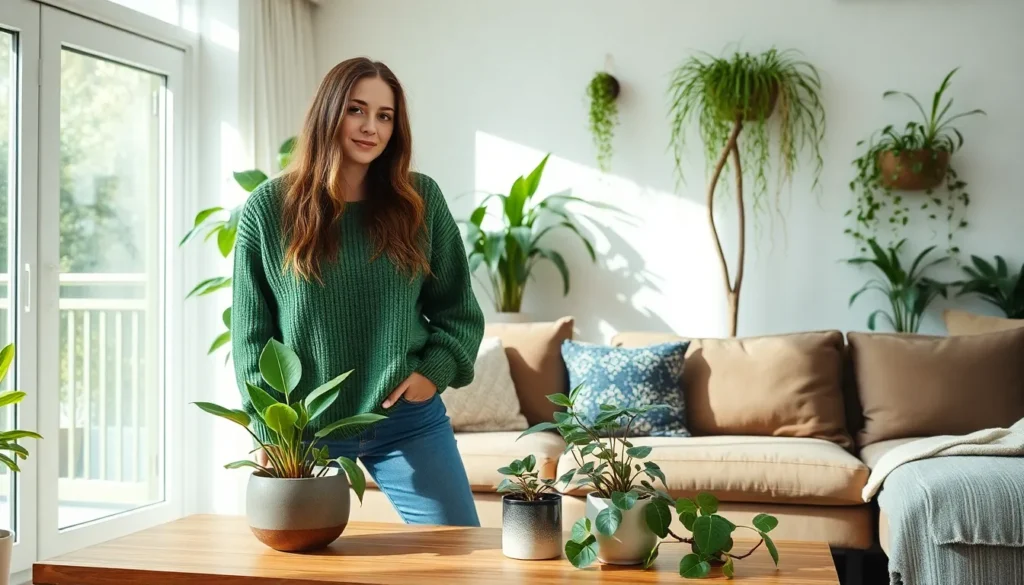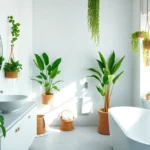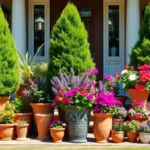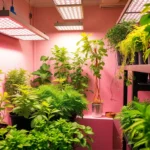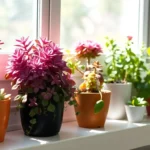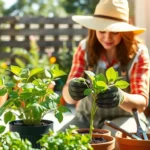Bringing nature indoors has never been more popular or more rewarding than it is today. We’re seeing a green revolution sweep through homes everywhere as people discover the groundbreaking power of indoor plants. These living decorations don’t just add visual appeal – they purify our air, boost our mood, and create that coveted biophilic connection we’re all craving.
Whether you’re a seasoned plant parent or someone who’s convinced they have a “black thumb,” we’ve got the insights you need to succeed. The key isn’t having perfect gardening skills – it’s choosing the right plants for your space and understanding how to style them effectively.
From dramatic statement plants that command attention to subtle green accents that complement your existing décor, indoor plants offer endless possibilities for every room and every style. Let’s explore how you can transform your living space into a lush, Instagram-worthy sanctuary that thrives year-round.
Choose the Right Plants for Your Indoor Space
Selecting appropriate plants forms the foundation of successful indoor decorating with greenery. We’ll guide you through the essential factors that determine which plants will thrive in your exact environment.
Consider Light Requirements and Room Conditions
Assess your natural light levels before purchasing any plants. South facing windows receive the most intense sunlight throughout the day, making them perfect for sun loving varieties like succulents, cacti, and flowering plants such as hibiscus or geraniums. East and west facing windows provide moderate light conditions that suit most houseplants including pothos, rubber trees, and fiddle leaf figs.
Measure your room’s humidity and temperature to ensure plant compatibility. Tropical plants like monstera deliciosa and bird of paradise prefer humidity levels between 40-60% and temperatures above 65°F. Desert plants such as aloe vera and snake plants tolerate dry conditions and temperature fluctuations better than their tropical counterparts.
Evaluate air circulation patterns in each room since stagnant air can lead to fungal issues and pest problems. Rooms with ceiling fans or natural airflow support healthier plant growth compared to closed spaces with limited ventilation.
Select Low-Maintenance Varieties for Beginners
Start with drought tolerant plants that forgive irregular watering schedules. Snake plants (Sansevieria), ZZ plants (Zamioculcas zamiifolia), and pothos varieties can survive weeks without water while maintaining their attractive appearance.
Choose plants with flexible light requirements that adapt to various indoor conditions. Spider plants, peace lilies, and Chinese evergreens thrive in both bright indirect light and lower light situations, making them ideal for beginners still learning plant placement strategies.
| Plant Type | Watering Frequency | Light Needs | Beginner Friendly |
|---|---|---|---|
| Snake Plant | Every 2-3 weeks | Low to bright | Yes |
| Pothos | Weekly | Low to medium | Yes |
| ZZ Plant | Every 2-4 weeks | Low to bright | Yes |
| Spider Plant | Weekly | Medium to bright | Yes |
| Peace Lily | Weekly | Medium | Moderate |
Opt for plants with visual cues that indicate their care needs. Succulents show wrinkled leaves when thirsty, while peace lilies dramatically droop their foliage to signal watering time.
Match Plant Size to Your Available Space
Measure your designated plant areas before shopping to avoid purchasing oversized specimens. Floor plants like fiddle leaf figs and bird of paradise require 3-4 feet of clearance from walls and furniture to accommodate their mature spread.
Consider vertical growing patterns when selecting plants for tight spaces. Trailing varieties such as heartleaf philodendron and string of pearls maximize greenery impact in small areas by growing downward from shelves or hanging planters.
Plan for future growth by researching mature plant dimensions. Many houseplants sold as compact specimens can triple in size within 2-3 years under proper care conditions, potentially outgrowing their original locations.
Select compact varieties for tabletops and small surfaces. Air plants, small succulents, and miniature orchids provide plant presence without overwhelming limited space or requiring frequent repotting.
Create Visual Interest with Plant Placement
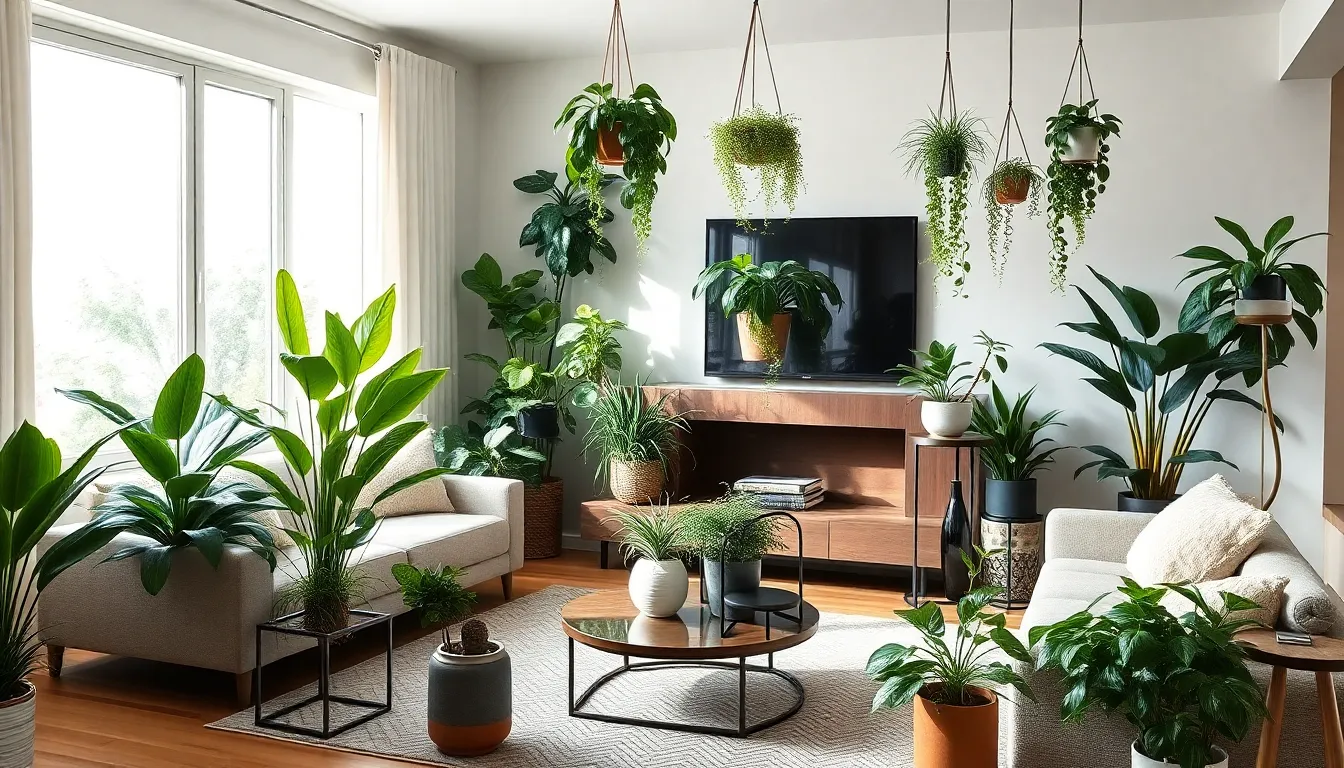
Strategic plant placement transforms our living spaces from ordinary to extraordinary. We can achieve stunning visual impact by following proven design principles that create depth and natural flow throughout our homes.
Use the Rule of Thirds for Balanced Arrangements
Position plants according to the artistic rule of thirds to create balanced and visually appealing arrangements. We divide our space into imaginary sections, placing plants at intersection points rather than centering them perfectly. This technique prevents our arrangements from feeling cluttered and makes them appear intentional and harmonious.
Avoid placing plants directly in the center of tables or shelves, as this creates static symmetry that feels rigid. Instead, we position larger plants slightly off center while balancing them with smaller specimens or decorative elements. This approach guides the eye naturally through our space and creates ever-changing visual movement.
Vary Heights with Plant Stands and Hanging Options
Create vertical interest by incorporating plants of different heights throughout our rooms. Tall plants like snake plants, fiddle leaf figs, and rubber plants add dramatic vertical lines that make ceilings appear higher and spaces feel more expansive.
Elevate smaller plants using decorative stands, floating shelves, or tiered plant holders to create layers at various eye levels. We can place trailing plants like pothos or string of hearts on high shelves, allowing their vines to cascade downward and fill vertical space naturally.
Hanging planters maximize our floor space while adding greenery at unexpected heights. We suspend plants from ceiling hooks or wall brackets to create natural canopies that feel organic and flowing. This approach keeps plants safely away from pets and children while utilizing otherwise unused vertical real estate.
Group Plants in Odd Numbers for Natural Appeal
Arrange plants in clusters of three, five, or seven to mimic natural growing patterns found in forests and meadows. Odd numbered groupings prevent our arrangements from appearing too symmetrical or artificial, creating relaxed compositions that feel organic.
Mix different plant types, textures, and sizes within each grouping to amplify visual interest. We combine broad leafed plants with spiky specimens and smooth foliage with textured varieties to create contrast and depth. Varying pot materials and colors within each cluster adds another layer of visual complexity while maintaining cohesion through thoughtful plant selection.
Group plants with similar care requirements together to simplify maintenance while achieving beautiful displays. This practical approach ensures our plant clusters thrive together while creating stunning focal points throughout our living spaces.
Select Stylish Planters and Containers
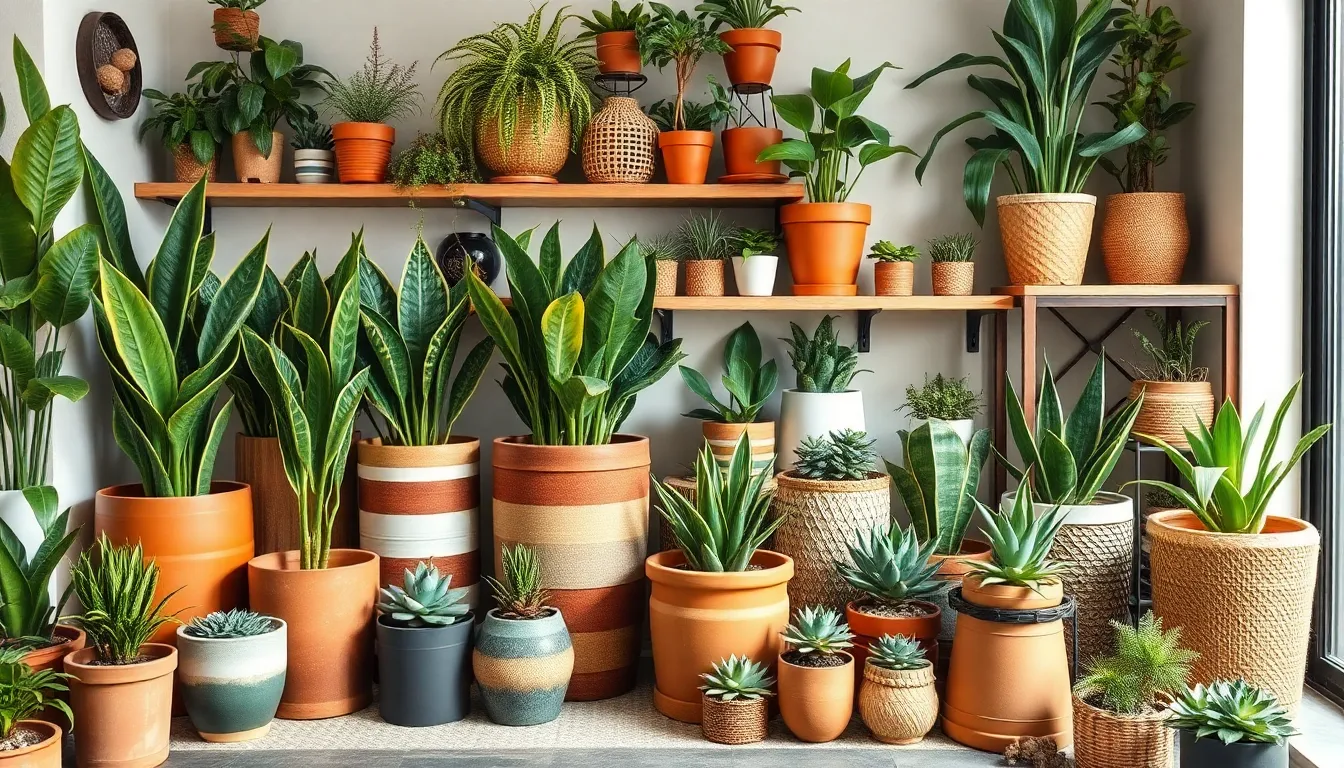
We’ve established the perfect placement for our plants, and now it’s time to choose containers that’ll elevate both our greenery and overall decor.
Choose Materials That Complement Your Decor Style
Terracotta pots offer rustic charm that works beautifully with bohemian or farmhouse aesthetics. These earthy containers add warmth and natural texture to any space.
Ceramic planters bring versatility through their wide range of colors and artistic designs. We can find glossy finishes for modern spaces or matte textures for understated elegance.
Metal containers suit minimalist interiors with their sleek lines and contemporary appeal. Copper, brass, or stainless steel options create striking focal points while maintaining clean aesthetics.
Woven baskets introduce natural warmth and work exceptionally well in casual, cozy environments. These containers add organic texture that softens hard surfaces throughout our homes.
Mixing materials thoughtfully creates cohesive looks by balancing smooth surfaces with rough textures. We can pair glossy ceramics with natural fiber baskets for visual interest without overwhelming our spaces.
Consider Drainage and Plant Health Requirements
Proper drainage prevents root rot and ensures our plants thrive long term. We should choose pots with drainage holes or create our own drainage system.
Inner and outer pot combinations work perfectly when we want decorative containers without drainage holes. We place plants in standard pots with holes inside our stylish outer containers.
Overwatering becomes less likely when we can monitor water levels and allow excess moisture to escape. This simple approach saves plants and reduces maintenance stress.
Plant exact needs determine placement since different species require varying amounts of water and light exposure. We match containers to plant requirements rather than forcing incompatible combinations.
Rotating pots occasionally promotes balanced growth by ensuring all sides receive adequate sunlight. This practice prevents plants from leaning toward light sources and maintains attractive shapes.
Mix Textures and Sizes for Ever-changing Displays
Large floor plants anchor our arrangements with substantial presence that grounds entire rooms. Fiddle leaf figs and rubber plants create dramatic focal points on floors or lower shelves.
Smaller plants add delicate details when placed on higher shelves or plant stands. Succulents and spider plants provide intricate textures without overwhelming our displays.
Tall plants like snake plants draw eyes upward and make rooms feel more spacious through vertical emphasis. These architectural specimens work especially well in corners or beside furniture.
Hanging plants use vertical space effectively while keeping greenery safe from pets and curious children. We maximize our plant collection without sacrificing floor or surface area.
Contrasting plant sizes create visual rhythm that keeps our eyes engaged throughout the space. We balance bold statement pieces with subtle accents for ever-changing, layered displays.
Design Plant Vignettes in Key Areas
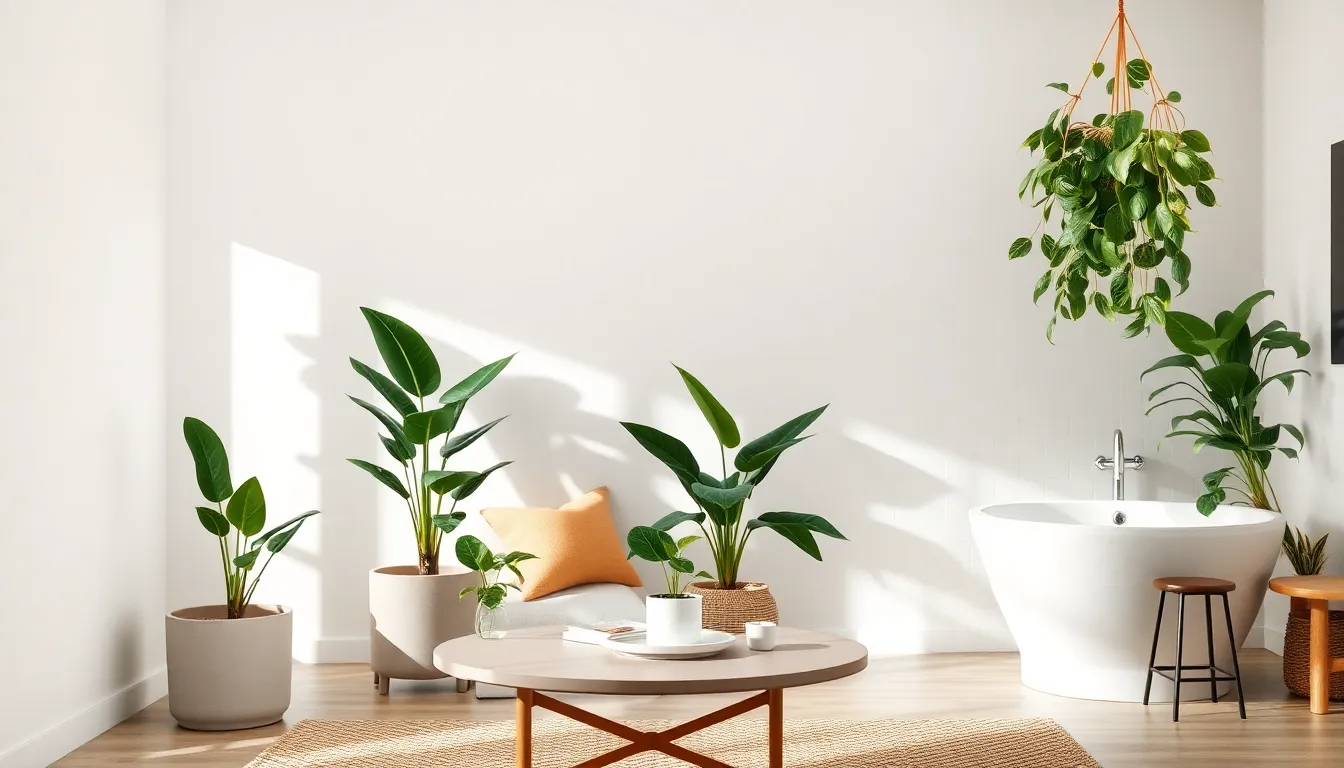
Creating thoughtful plant arrangements in strategic locations transforms ordinary spaces into vibrant, living displays that capture attention and bring natural beauty indoors.
Transform Empty Corners into Green Focal Points
Empty corners become stunning statement areas when we position tall, mature plants in large neutral containers. Rubber plants, large Ficus varieties, and Monsteras excel at filling dead space while softening harsh architectural lines throughout our homes. These towering green specimens create natural room dividers and provide privacy within open floor plans.
Strategic placement behind couches or near side tables helps integrate these botanical focal points seamlessly into our existing furniture arrangements. We can choose containers that complement our decor style while ensuring they’re substantial enough to support these impressive plants. The result transforms previously overlooked corners into captivating green sanctuaries that draw the eye and enhance our room’s overall aesthetic.
Style Coffee Tables and Side Tables with Small Plants
Coffee tables and side tables provide perfect platforms for compact plant displays that add freshness without overwhelming our living spaces. Mini Monstera, Calathea, and Raindrop Peperomia bring life to these surfaces while maintaining the functionality we need for daily activities.
Mixing plants of varying heights and foliage styles creates visual interest across our tabletops. We can combine a slightly taller specimen with one or two smaller companions to establish natural looking groupings. This layered approach prevents our surfaces from appearing cluttered while ensuring each plant receives adequate light and attention.
Coordinating our plant containers with existing decor elements ties these displays together beautifully. Whether we choose matching pots or complementary textures, consistency in our container choices creates polished vignettes that feel intentional rather than random.
Create Bathroom Oases with Humidity-Loving Plants
Bathrooms naturally provide the higher humidity levels that tropical plants crave, making them ideal locations for moisture loving species. Ferns, pothos, and peace lilies thrive in these steamy environments while softening the hard surfaces typical of bathroom design.
Adding greenery to our bathrooms creates spa like atmospheres that promote relaxation and wellness. These plants not only beautify our most utilitarian spaces but also improve air quality and overall ambiance. We can place them on countertops, shelves, or even hang them from ceiling hooks to maximize our vertical space.
The combination of natural humidity and filtered light from bathroom windows provides optimal growing conditions for many tropical houseplants. This environment allows us to successfully grow species that might struggle in drier areas of our homes, expanding our indoor gardening possibilities significantly.
Incorporate Vertical Elements and Living Walls
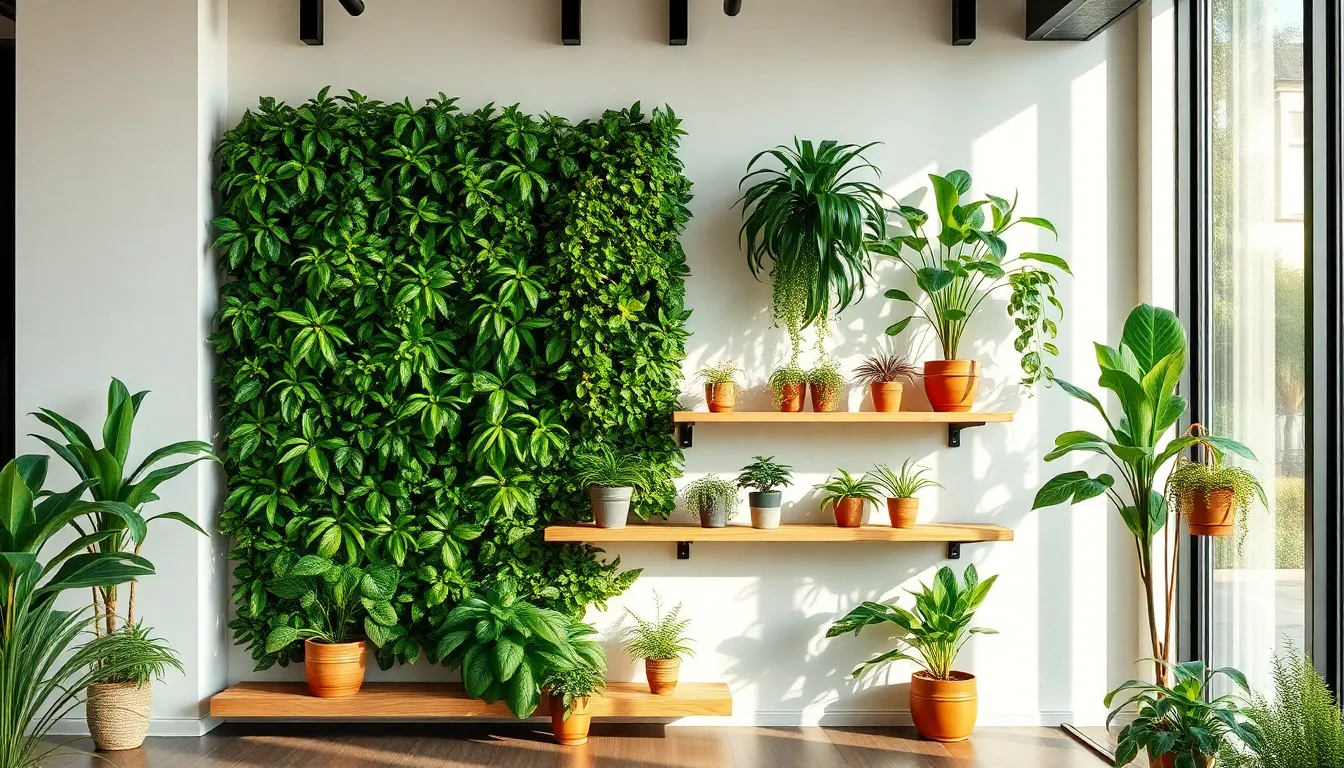
Vertical gardening transforms blank walls into vibrant green focal points while maximizing limited floor space. Living walls create stunning textured displays that serve as natural decor features, perfect for small spaces where every square foot matters.
Install Floating Shelves for Tiered Plant Displays
Floating shelves create ever-changing tiered arrangements that add visual depth to our indoor plant displays. We can position these shelves at varying heights to showcase multiple plants simultaneously, keeping greenery off the floor while creating layered interest.
Staggered shelf arrangements work beautifully in modern spaces, while linear patterns complement traditional decor styles. Different plant species thrive when we mix sizes and shapes across shelf levels, creating natural visual flow throughout the room.
| Shelf Configuration | Best Plant Types | Visual Impact |
|---|---|---|
| Staggered pattern | Trailing plants, small succulents | Ever-changing, modern look |
| Linear arrangement | Uniform pots, herbs | Clean, organized feel |
| Corner installation | Tall plants, cascading varieties | Space maximization |
Use Wall-Mounted Planters to Save Floor Space
Wall-mounted planters eliminate floor clutter while bringing greenery to eye level where we notice it most. These space-saving answers work perfectly in kitchens for fresh herbs, living rooms for decorative plants, or bathrooms for humidity-loving species.
Various materials and styles ensure these planters integrate seamlessly with existing decor themes. Trailing plants like pothos create beautiful cascading effects, while succulents add architectural interest without overwhelming smaller spaces.
Kitchen installations keep cooking herbs within easy reach, transforming meal preparation into a more connected experience with nature. Living room placements create clean, uncluttered aesthetics that enhance rather than compete with furniture arrangements.
Create DIY Plant Walls with Modular Systems
Modular plant wall systems offer incredible flexibility through individual planter units that we can arrange in countless configurations. These DIY answers enable complete personalization, allowing us to design unique patterns and swap plants seasonally or as they grow.
Built-in irrigation features make these systems beginner-friendly, eliminating guesswork around watering schedules. Users can start small and expand their vertical gardens over time, creating customized displays that evolve with their confidence and space needs.
Pattern flexibility means we can create geometric designs, organic arrangements, or structured grids depending on our aesthetic preferences. Plant swapping becomes effortless when individual units connect and disconnect easily, keeping displays fresh and captivating year-round.
Layer Plants with Existing Home Decor
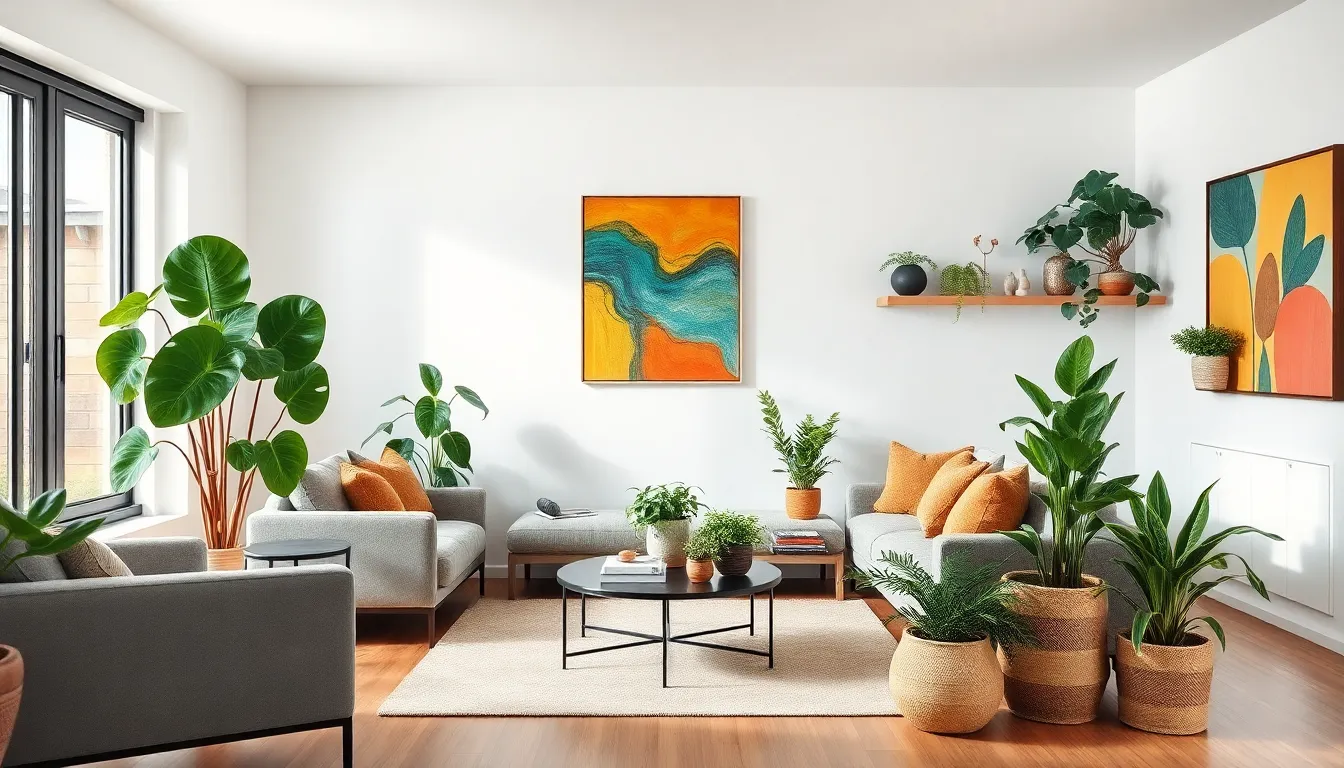
We’re ready to seamlessly integrate plants into our existing spaces by treating them as essential design elements rather than afterthoughts.
Coordinate Plant Colors with Your Color Scheme
Selecting plants that complement our room’s color palette creates a cohesive design that feels intentional and polished. Plants with olive green leaves work beautifully in mid-century styled rooms with rich wood tones and mustard accents, while dried palms enhance boho interiors with their neutral, textured appearance. We’ll achieve the most harmonious look by choosing containers that align with our existing materials and finishes.
Natural fiber planters complement rustic and organic design styles perfectly. Sleek ceramic containers enhance modern and minimalist spaces with their clean lines. Metallic pots add sophisticated touches to contemporary rooms. We can even coordinate flower colors with our accent pieces when selecting flowering plants like orchids or bromeliads.
Balance Greenery with Artwork and Accessories
Creating visual harmony means distributing plants thoughtfully alongside our existing decorative elements rather than overwhelming spaces with greenery. Plants can frame artwork beautifully, drawing attention to favorite pieces while adding natural texture to gallery walls. We’ll soften the look of harder objects like metal sculptures or glass accessories by placing trailing plants nearby.
Grouping plants in odd numbers of three or more creates appealing visual rhythm that mimics natural ecosystems. This approach prevents our spaces from feeling cluttered while maintaining interesting focal points. We can place plants on flat surfaces like desks and shelves or use floor space for larger statement pieces that anchor our room’s design.
Use Plants to Soften Hard Architectural Lines
Large, lush plants excel at transforming stark architectural features into warmer, more inviting elements of our home design. Fiddle leaf figs and palms add grandeur and drama to refined spaces while breaking the rigidity of minimalistic or modern interiors. We’ll position these statement plants in corners where walls meet or along straight edges to create organic transitions.
Sharp edges and corners become natural focal points when we introduce trailing plants or bushy varieties that spill beyond their containers. Floor plants work particularly well for softening the base of staircases or the junction between walls and ceilings. We can use plants to create natural room dividers that define spaces without the harshness of traditional barriers.
Maintain Your Indoor Plant Decor
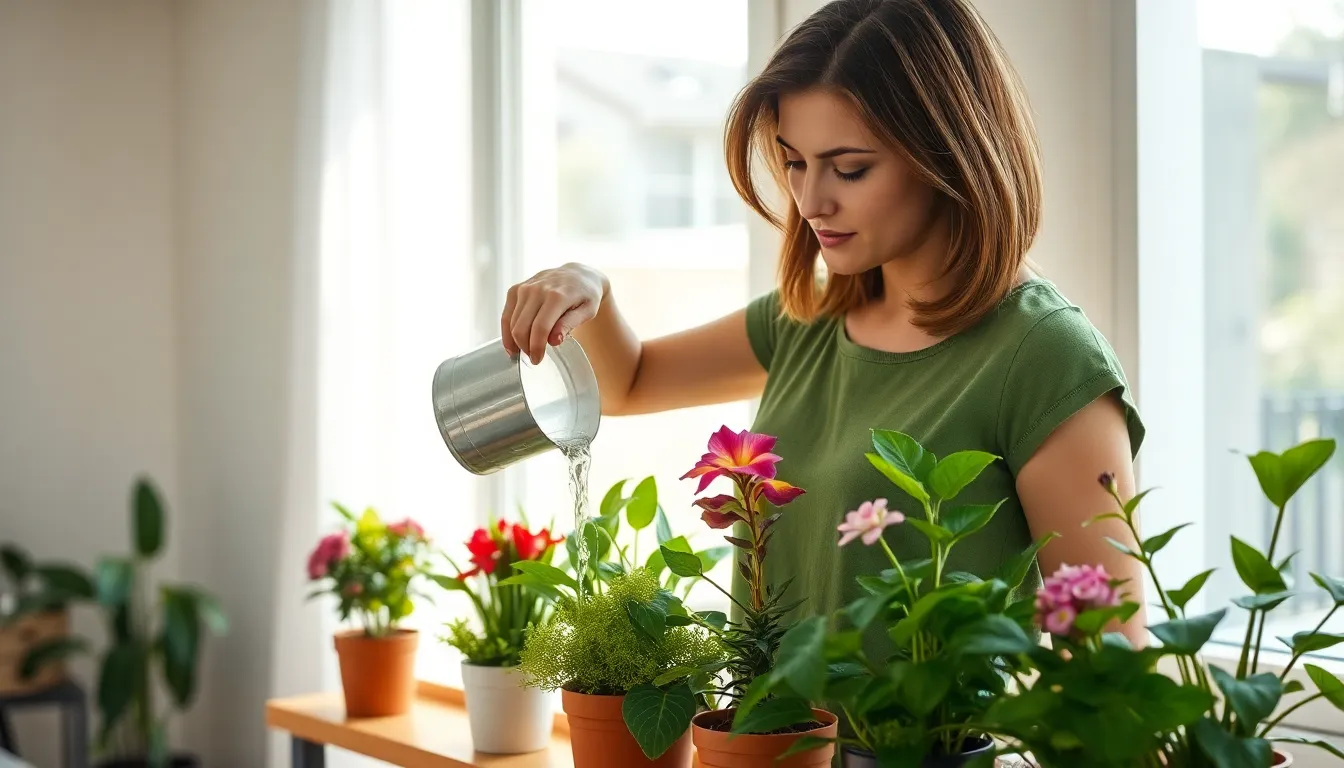
Keeping your indoor plant displays thriving requires consistent attention and strategic care practices. We’ll show you how to establish routines that ensure your green spaces remain healthy and visually appealing year-round.
Establish a Regular Watering and Care Schedule
Creating a consistent watering schedule customized to each plant species forms the foundation of successful indoor plant maintenance. We recommend checking soil moisture levels weekly and adjusting watering frequency based on seasonal changes and individual plant needs.
Overwatering poses the most common threat to indoor plants, causing root rot and plant death. Understanding exact plant requirements helps us avoid this critical error while ensuring proper hydration for healthy growth.
Beyond watering, regular care includes pruning dead or yellowing leaves to maintain plant health and appearance. We should clean leaves monthly to remove dust buildup, which can block light absorption and reduce photosynthesis efficiency.
Pest monitoring becomes essential during routine care sessions. Checking for signs of spider mites, aphids, or fungus gnats allows us to address problems before they spread to other plants in our displays.
Rotate Plants for Even Growth and Health
Rotating pots periodically prevents plants from leaning toward light sources and promotes balanced growth patterns. We should turn each plant a quarter turn every two weeks to ensure all sides receive adequate light exposure.
This rotation practice helps maintain the balanced look of our plant displays while preventing unsightly stretching or lopsided growth. Plants that receive even light distribution develop fuller, more symmetrical shapes that enhance our decor arrangements.
Strategic rotation also prevents soil compaction on one side of the pot, improving root health and water absorption. We can combine rotation with our regular watering schedule to maximize efficiency in plant care routines.
Replace Seasonal Plants to Keep Displays Fresh
Swapping out plants depending on the season keeps our displays vibrant and prevents decor from feeling static. We can introduce flowering plants like cyclamen in winter or colorful foliage plants during autumn to match seasonal themes.
Seasonal replacement introduces new textures and colors that complement changing home decor and lighting conditions. This practice allows us to experiment with different plant varieties without long-term commitment to species that might not thrive year-round.
Strategic plant replacement also helps us manage plants that have outgrown their designated spaces. We can move larger specimens to more suitable locations while introducing appropriately sized plants to maintain our carefully planned arrangements.
Timing seasonal swaps with natural growth cycles ensures healthier transitions for both incoming and outgoing plants. We should plan replacements during plants’ dormant periods when they’re less stressed by environmental changes.
Conclusion
We’ve explored how indoor plants can transform any living space into a vibrant sanctuary that benefits both our health and home’s aesthetic appeal. The key lies in thoughtful selection and strategic placement rather than complicated gardening expertise.
By understanding your space’s unique conditions and choosing plants that thrive in those environments you’ll create displays that flourish year-round. Remember that successful indoor plant decor combines practical care routines with creative styling techniques.
Whether you’re starting with a single statement plant or designing an entire living wall the journey of decorating with plants is both rewarding and adaptable. Your indoor garden will evolve alongside your skills and preferences creating a personalized green oasis that brings nature’s calming presence into your daily life.
Frequently Asked Questions
What are the main benefits of incorporating indoor plants into home decor?
Indoor plants offer multiple benefits including air purification, mood enhancement, and creating a stronger connection with nature. They transform living spaces into vibrant, year-round sanctuaries while serving as both bold statement pieces and subtle decorative accents that enhance any room’s atmosphere.
Which plants are best for beginners with no gardening experience?
Low-maintenance varieties like snake plants and pothos are ideal for beginners. These resilient plants can thrive under various lighting conditions, forgive irregular watering schedules, and adapt well to different indoor environments, making them perfect for those new to indoor gardening.
How do I choose the right plants for my indoor space?
Assess your space’s light requirements, humidity levels, and temperature conditions. Measure designated plant areas to avoid oversized specimens, and select compact varieties for small spaces. Consider plants’ future growth patterns and vertical growing habits to maximize greenery effectively.
What’s the rule of thirds for arranging indoor plants?
The rule of thirds involves positioning plants at intersection points rather than centering them to create balanced, visually appealing arrangements. This technique avoids static symmetry and creates more dynamic, natural-looking displays that draw the eye around the space.
How can I create visual interest with plant placement?
Vary heights using plant stands and hanging options to create vertical interest. Group plants in odd numbers to mimic natural patterns, mix different types and textures, and cluster plants with similar care requirements together for easier maintenance while maximizing visual appeal.
What types of planters work best for indoor plants?
Choose planters based on your decor style: terracotta for rustic charm, ceramic for versatility, metal for minimalist aesthetics, and woven baskets for cozy feels. Ensure proper drainage with holes or use inner/outer pot combinations to prevent overwatering and maintain plant health.
How do I style plants in small living spaces?
Maximize vertical space with wall-mounted planters, floating shelves, and hanging plants. Use large floor plants for grounding, smaller plants for delicate details, and create living walls or modular plant systems that save floor space while bringing greenery to eye level.
Which areas of the home work best for plant displays?
Transform empty corners with tall plants like rubber trees and Monsteras. Style coffee and side tables with compact plants while maintaining functionality. Create bathroom oases with humidity-loving plants like ferns and peace lilies that thrive in steamy environments.
How do I maintain my indoor plant decor effectively?
Establish consistent care routines with customized watering schedules based on each plant’s needs. Monitor for pests, regularly prune and clean plants, rotate them for even growth, and replace seasonal plants to keep displays fresh and vibrant year-round.
How can I integrate plants seamlessly with existing home decor?
Coordinate plant colors with your room’s color palette for cohesion. Balance greenery with artwork and accessories, use large plants to soften hard architectural lines, and employ trailing plants to create natural transitions and room dividers throughout your space.

